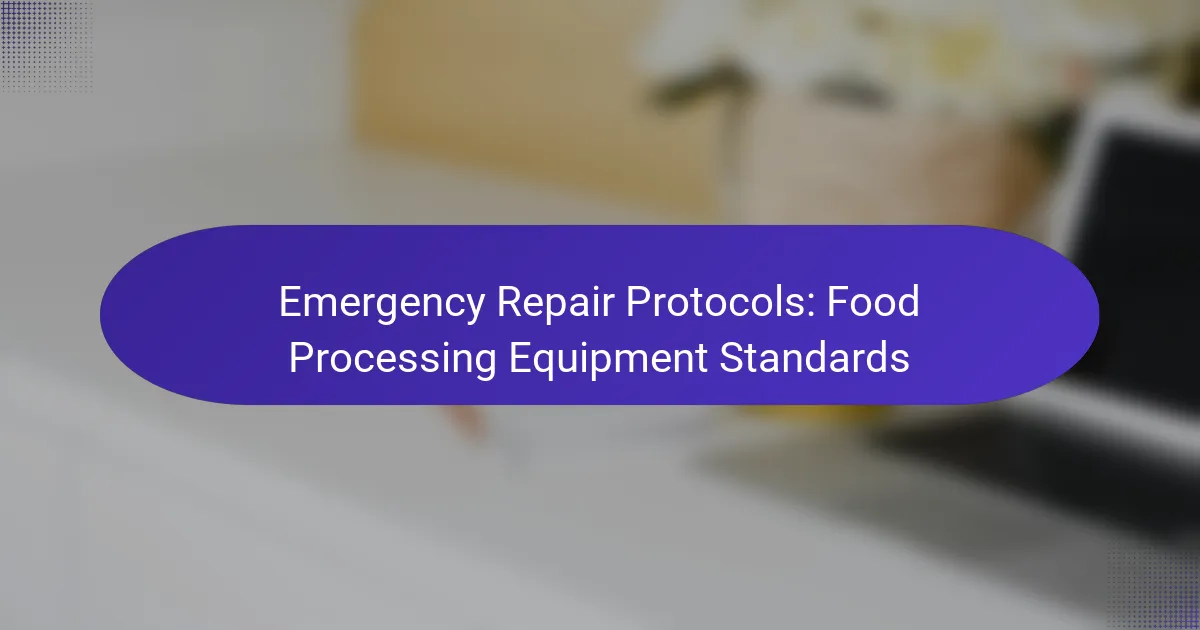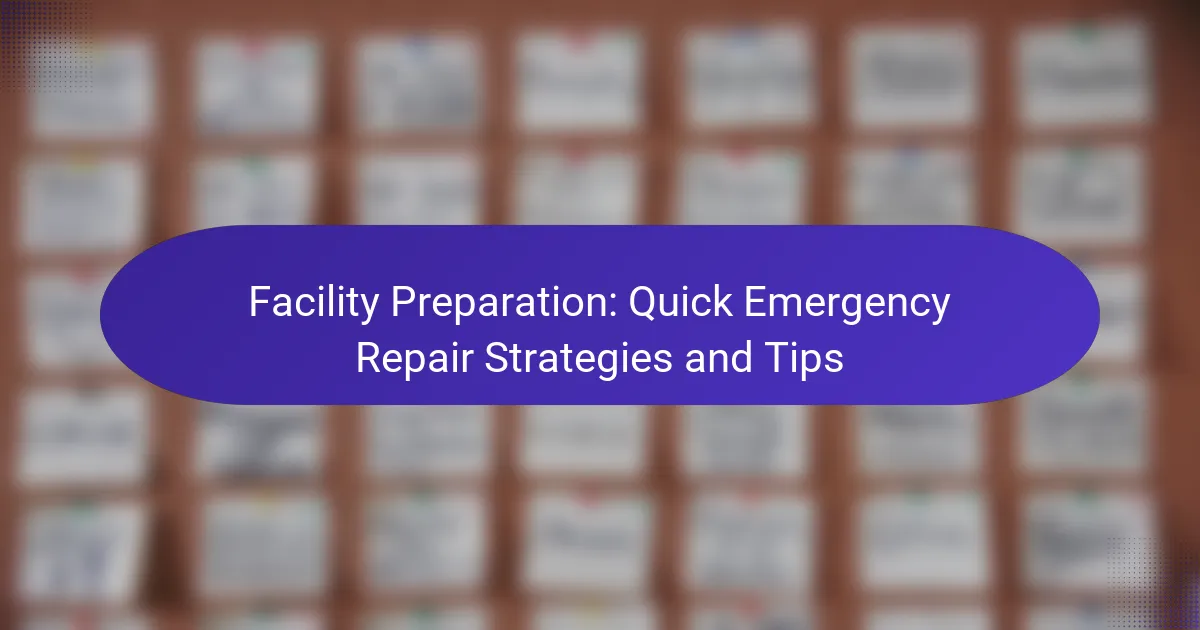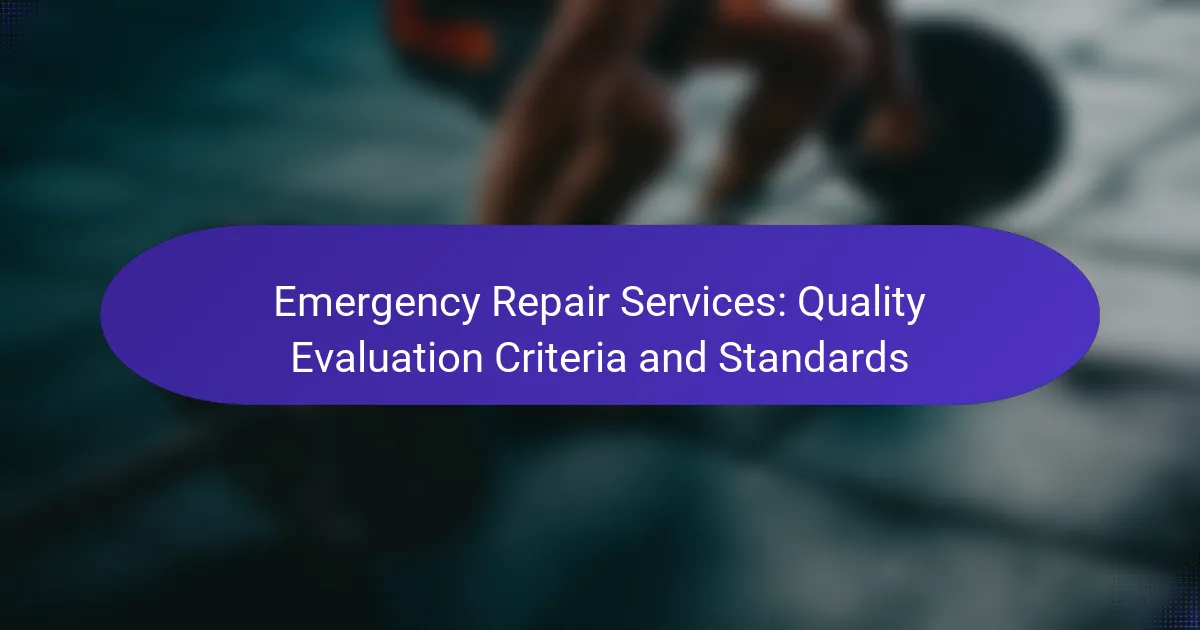Emergency repair protocols for food processing equipment are essential for ensuring safety and minimizing operational downtime. These protocols encompass immediate shutdown procedures, damage assessment, and temporary repairs while adhering to established safety standards and regulatory guidelines. By following these critical steps, facilities can maintain compliance and ensure the integrity of their equipment during emergencies.
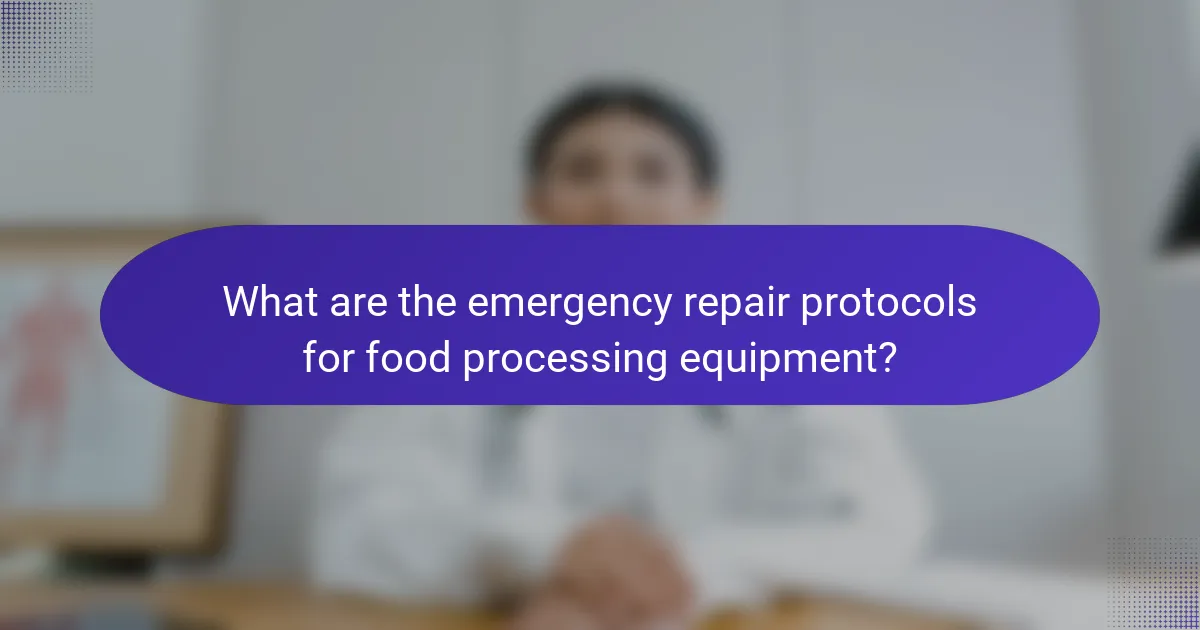
What are the emergency repair protocols for food processing equipment?
Emergency repair protocols for food processing equipment involve a series of critical steps to ensure safety and minimize downtime. These protocols include immediate shutdown procedures, assessing damage, implementing temporary repairs, and maintaining proper documentation.
Immediate shutdown procedures
When an emergency occurs, the first step is to immediately shut down the affected equipment. This action prevents further damage and ensures the safety of personnel. Operators should be familiar with the emergency stop mechanisms and ensure they are accessible at all times.
After shutting down the equipment, isolate it from power sources to prevent accidental reactivation. Use lockout/tagout (LOTO) procedures to secure the equipment during repairs, adhering to relevant safety regulations.
Assessment of equipment damage
Once the equipment is safely shut down, conduct a thorough assessment to identify the extent of the damage. Look for visible signs of wear, leaks, or mechanical failure. This evaluation helps determine whether repairs can be made on-site or if the equipment requires professional servicing.
Document the findings of the assessment, noting specific issues and potential risks. This information is crucial for planning repairs and for future reference in maintenance logs.
Temporary repair techniques
Temporary repairs may be necessary to restore functionality quickly. Common techniques include using duct tape for minor leaks or securing loose components with clamps. Ensure that any temporary fixes are safe and do not compromise the equipment’s operation.
Keep in mind that temporary repairs are not a substitute for permanent solutions. Schedule a follow-up for a comprehensive repair as soon as possible to avoid further issues.
Documentation requirements
Proper documentation is essential throughout the emergency repair process. Record all actions taken, including the initial assessment, repairs made, and any parts replaced. This documentation serves as a valuable reference for future maintenance and compliance with industry standards.
Additionally, maintain a log of any downtime caused by the emergency. This information can help in analyzing equipment reliability and planning for future improvements in maintenance protocols.
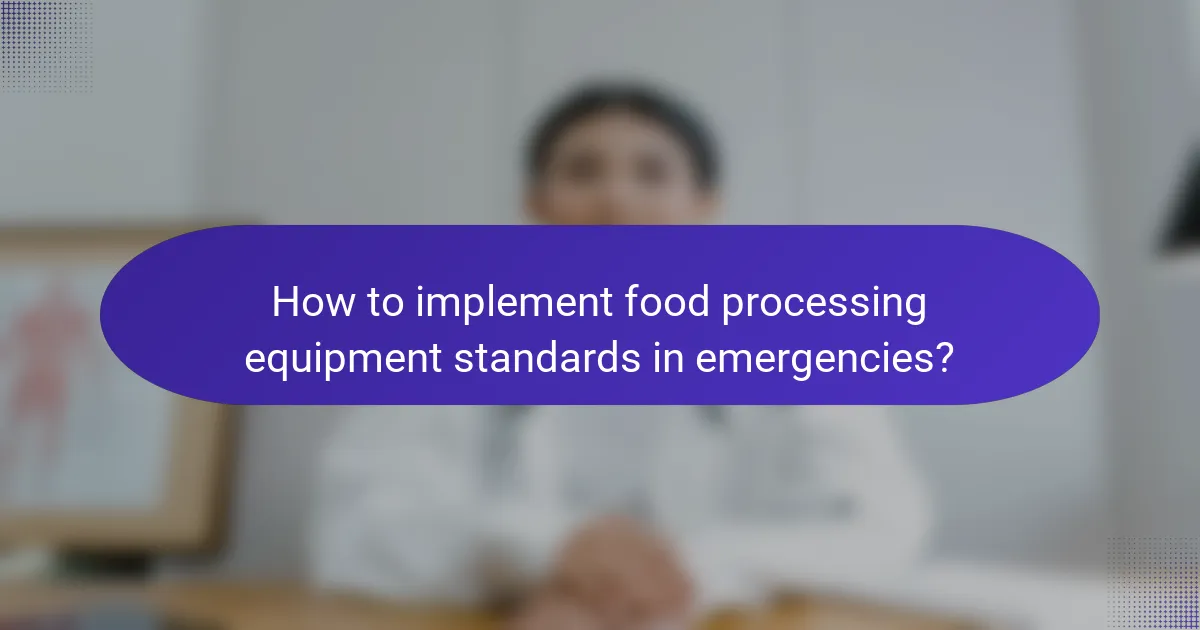
How to implement food processing equipment standards in emergencies?
Implementing food processing equipment standards during emergencies involves adhering to established protocols that ensure safety and compliance. Key actions include assessing equipment integrity, following regulatory guidelines, and utilizing certified materials to maintain operational standards.
Compliance with FDA regulations
Compliance with FDA regulations is crucial for food processing facilities, especially during emergencies. These regulations set forth safety standards that must be met to ensure food quality and public health. Familiarize yourself with relevant guidelines, such as those related to equipment maintenance and sanitation practices.
In emergencies, prioritize immediate compliance checks to identify any equipment that may pose a risk. Document any deviations and corrective actions taken to maintain a clear record for future inspections. Regular training for staff on FDA requirements can also enhance preparedness.
Use of NSF-certified materials
Using NSF-certified materials is essential for ensuring that food processing equipment meets safety and health standards. NSF International provides certification for materials that come into contact with food, ensuring they are safe and suitable for use in food processing environments.
In an emergency, verify that all materials and components used in repairs are NSF-certified. This reduces the risk of contamination and ensures compliance with health regulations. Keep a list of approved NSF-certified suppliers to expedite the procurement of necessary materials during urgent situations.

What are the best practices for maintaining food processing equipment?
Maintaining food processing equipment involves regular inspections, preventive maintenance, and adherence to industry standards. These practices ensure equipment operates efficiently, reduces downtime, and complies with safety regulations.
Regular inspection schedules
Establishing regular inspection schedules is crucial for identifying potential issues before they escalate. Inspections should occur weekly or monthly, depending on equipment usage and manufacturer recommendations. Documenting findings helps track performance and facilitates timely repairs.
During inspections, focus on critical components such as motors, belts, and seals. Look for signs of wear, leaks, or unusual noises that may indicate underlying problems. Regular checks can prevent costly breakdowns and ensure compliance with health regulations.
Preventive maintenance checklists
Creating preventive maintenance checklists is an effective way to standardize maintenance tasks and ensure nothing is overlooked. These checklists should include routine tasks such as cleaning, lubrication, and part replacements, scheduled at intervals based on equipment usage.
For example, a checklist might specify daily cleaning of surfaces, weekly lubrication of moving parts, and monthly inspections of electrical connections. Implementing these checklists not only prolongs equipment life but also enhances food safety by minimizing contamination risks.

What are the key safety standards for food processing equipment?
Key safety standards for food processing equipment ensure that machinery is safe for operation and does not compromise food safety. These standards include regulations and certifications that guide manufacturers and operators in maintaining safe and hygienic environments.
OSHA safety guidelines
The Occupational Safety and Health Administration (OSHA) provides safety guidelines that are crucial for food processing equipment. These guidelines cover aspects such as machine guarding, electrical safety, and personal protective equipment (PPE) requirements to prevent workplace injuries.
To comply with OSHA standards, employers should conduct regular safety audits, provide training on equipment use, and ensure that all safety devices are functional. Common pitfalls include neglecting to update safety protocols and failing to train staff adequately on new equipment.
ISO 22000 certification requirements
ISO 22000 is an international standard that outlines the requirements for a food safety management system. This certification ensures that food processing equipment meets specific safety and hygiene standards throughout the food supply chain.
To achieve ISO 22000 certification, organizations must implement a systematic approach to managing food safety risks. This includes conducting hazard analyses, establishing critical control points, and maintaining thorough documentation. Regular internal audits and management reviews are essential to ensure ongoing compliance and improvement.

How to choose a reliable emergency repair service?
To choose a reliable emergency repair service for food processing equipment, prioritize providers with proven expertise and quick response capabilities. Look for companies that comply with industry standards and have a solid track record in handling emergencies effectively.
Evaluating service provider certifications
When assessing emergency repair services, check for relevant certifications that demonstrate compliance with industry standards, such as ISO 9001 or specific food safety regulations. Certifications indicate that the provider adheres to quality management practices and understands the unique requirements of food processing equipment.
Additionally, consider any local or national certifications that may be required in your region. For instance, in the EU, compliance with CE marking can be crucial for equipment safety and reliability.
Assessing response times and availability
Response times are critical in emergency situations. Aim for a service provider that guarantees a response within a few hours, ideally offering 24/7 availability. This ensures that your food processing operations can resume quickly, minimizing downtime and potential losses.
Inquire about the service provider’s average response times and their ability to mobilize technicians during peak hours or holidays. A reliable company should have a clear plan for handling emergencies, including a dedicated team ready to assist at any time.

What are the costs associated with emergency repairs?
The costs associated with emergency repairs for food processing equipment can vary significantly based on the type of equipment, the nature of the repair, and the urgency of the service. Businesses should anticipate expenses that include labor, parts, and potential downtime, all of which can impact overall operational costs.
Average repair service fees
Average repair service fees for food processing equipment typically range from $100 to $300 per hour, depending on the technician’s expertise and the complexity of the issue. Additional costs may arise from parts replacement, which can vary widely based on the equipment type and manufacturer.
For example, a simple repair might only require a few hundred dollars, while more complex issues could escalate to thousands of dollars, especially if specialized parts are needed. It’s advisable to obtain multiple quotes from service providers to ensure competitive pricing.
Businesses should also consider maintenance contracts, which can help mitigate emergency repair costs by providing regular inspections and priority service. This proactive approach can reduce the likelihood of unexpected breakdowns and associated expenses.
